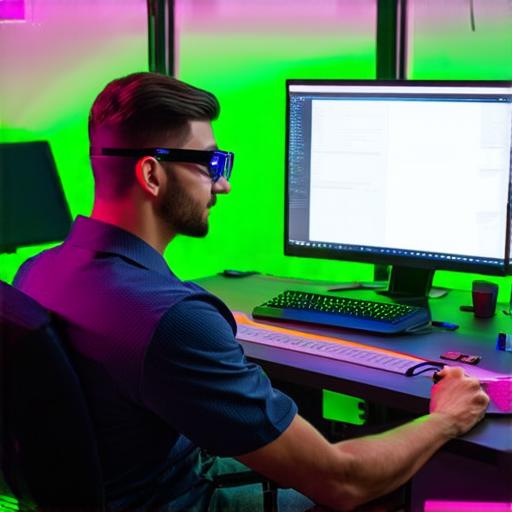Augmented reality (AR) is a technology that enhances our real-world environment with computer-generated data and graphics. It allows us to interact with digital objects in the real world, and has become increasingly popular in recent years, particularly in industries such as gaming, marketing, and education.
1. Enhanced Engagement
One of the main benefits of augmented reality is its ability to enhance engagement with digital content. By overlaying interactive elements onto our real-world environment, AR allows us to interact with digital objects in a more meaningful way. This can be particularly useful in marketing and advertising, where AR has been used to create engaging experiences for customers.
2. Immersive Learning
Another benefit of augmented reality is its potential to enhance learning and education. By using AR to overlay digital objects onto real-world environments, students can gain a deeper understanding of the subject matter being taught. This can be particularly useful in subjects such as science, history, and art, where students can explore digital models and recreations of historical events or works of art.
3. Increased Productivity
Augmented reality can also increase productivity by providing real-time information and guidance to workers in a variety of industries. For example, AR has been used in construction and manufacturing to provide workers with real-time instructions and information about their tasks, which can lead to faster and more efficient workflows.
4. Improved Safety
In some cases, augmented reality can also improve safety by providing workers with real-time information about potential hazards in their environment. For example, AR has been used in mining and oil and gas industries to provide workers with real-time information about the location of underground resources, which can help prevent accidents.

5. Creative Possibilities
Finally, augmented reality offers a wide range of creative possibilities for artists, designers, and other creatives. By overlaying digital elements onto real-world environments, AR allows artists to create interactive installations and experiences that would not be possible with traditional mediums. This can lead to new and exciting creative opportunities.
In conclusion, augmented reality is a powerful tool with a wide range of potential uses in industries ranging from marketing and advertising to construction and manufacturing. Its ability to enhance engagement, improve learning and education, increase productivity, improve safety, and offer creative possibilities make it an attractive option for businesses and individuals looking to gain a competitive edge or explore new creative opportunities.
